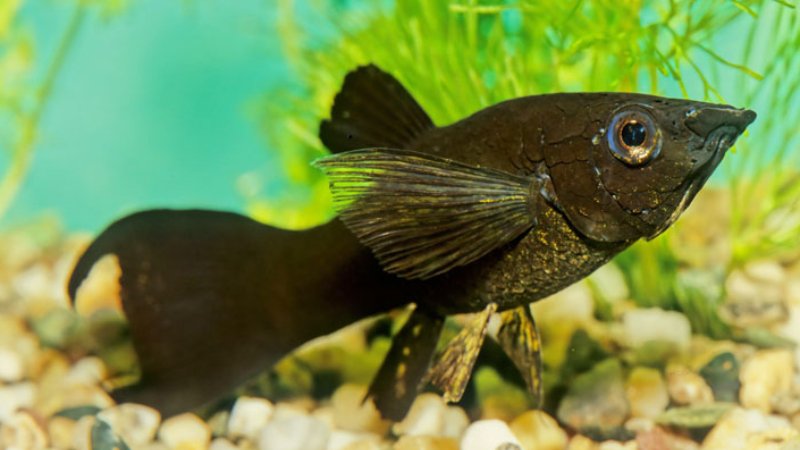It’s heartbreaking to see a pet become ill, especially if you don’t know what is happening with it or what you can do to assist. Sadly, molly fish, like other creatures, may become ill.
You may learn about the most prevalent molly fish illnesses, parasites, and treatments in the sections that follow. I’ll also provide you with some important and practical molly fish illness prevention advice.
Related Post : How To Tell If A Molly Fish Is Dying and Ways To Save Them
Most Common Molly Fish Diseases
If you are keeping molly fish, you will likely encounter the following diseases and illnesses, so note their symptoms and treatment.
White spots (ich or ick)
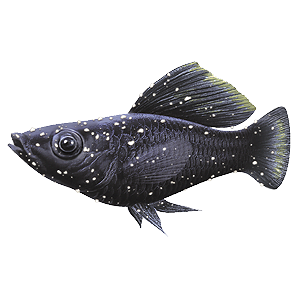
When you notice white spots on the fins and skin of your molly fish, you know Ich or Ick disease is present. Fortunately, you can easily treat this disease if you begin treatment right away. The reason behind the disease is an ectoparasite.
Additionally, apart from the spots your fish develop, you’ll notice them trying to scratch off the spots by rubbing themselves against objects in the tank. You may also observe them losing their appetite during the illness.
Velvet
The parasite Oodinium causes velvet disease by burrowing into your fish’s skin and generating microscopic gold-colored cysts. This illness spreads swiftly and frequently, with disastrous effects.
Immediate intervention is required to rescue your molly fish, particularly since spotting the condition in its initial stages is difficult due to the cysts’ tiny size at first. Lesions on the skin occur only as the illness advances.
Fin and tail rot
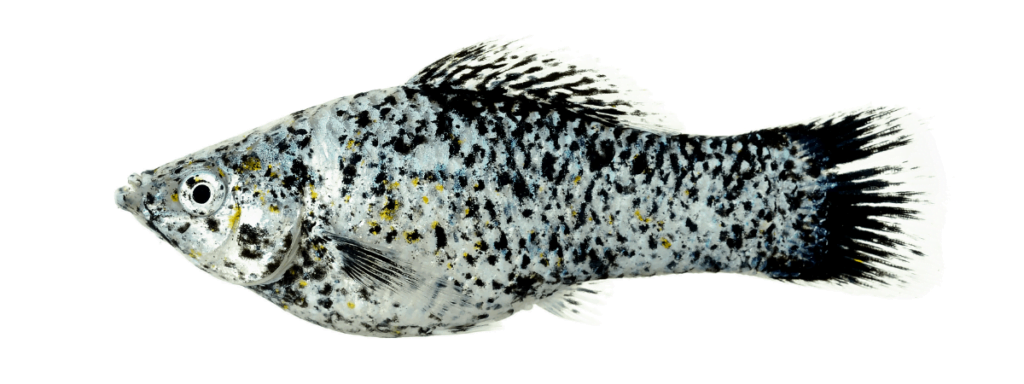
Molly fish fin rot illness can be caused by either fungal or bacterial diseases. As a result of high levels of ammonia in the tank and poor tank conditions, bacteria and fungi thrive in the tank causing disease.
Opportunistic bacteria and fungi will thrive in bad tank conditions when fish are injured.
When the body of the fish begins to show white milky areas (advanced stages) on other areas, as well as a tail or fin that appears chewed up, shredded and stuck together, that is a sign that its fin or tail has rotted.
Protozoan
A protozoan thrives in bad water conditions where it can easily enter your fish’s bloodstream through wounds, cuts or scratches on the skin. The protozoa then gradually work their way deeper into the muscles until they eventually find their way into your fish’s blood.
White spots on the skin, excess slime, weakness, loss of appetite, and lethargy are a few of the symptoms of this disease.
Mouth fungus & columnaris
Mouth fungus is a bacterial illness that looks suspiciously like a fungal infection.
It shows as white threads or splashes on a fish’s mouth or skin. In severe stages, it may be accompanied with ragged fins, fast breathing, increased mucus production, and ulcers and lesions.
It is critical to intervene early!
Dropsy
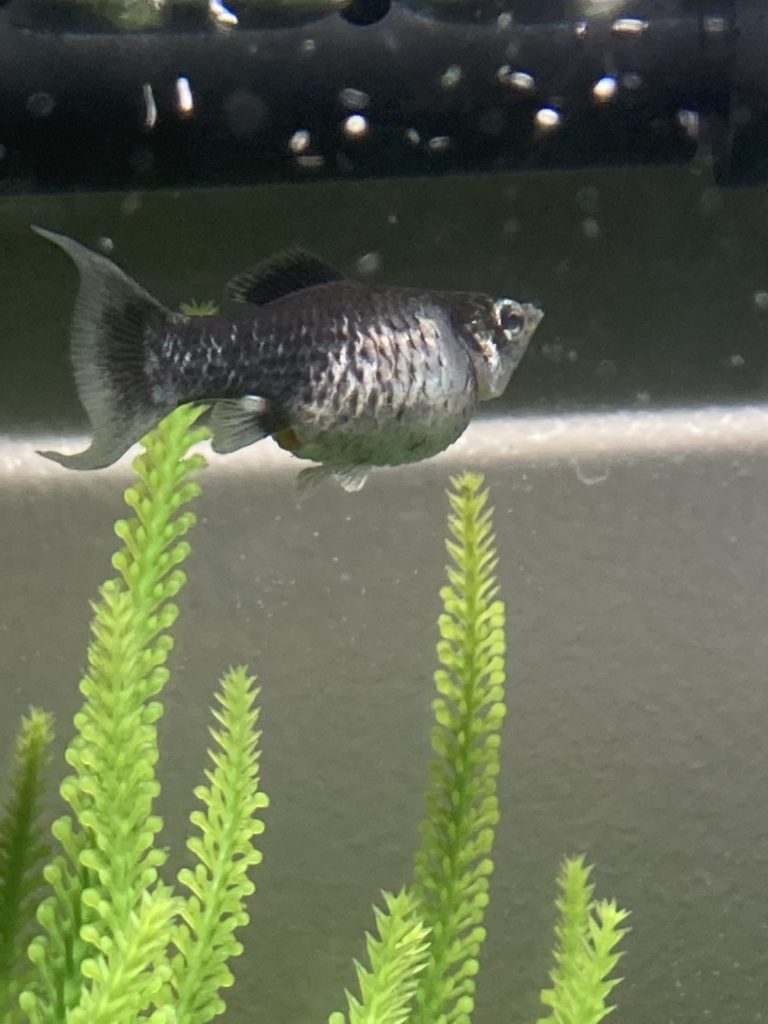
Dropsy is a terrible sickness that is, sadly, incurable. It is an illness that causes renal and liver issues, causing fish to retain water.
Fish will seem swollen with scales protruding as a result of water retention. They will struggle to swim. Dropsy can be caused by poor water quality and stress.
Swollen gills
A molly fish with swollen gills or one that frantically seeks air at the surface is a sign that the aquarium’s water isn’t of good quality.
As a result of ammonia poisoning or carbonate poisoning, the fish may appear sick and have swollen gills.
Ammonia levels can rise to dangerous levels when you do not change your aquarium’s water regularly, or if food is left to decay in the aquarium.
Red blood spot
Normally seen in recently cycled tanks with erroneous water chemistry. Red stains on your molly fish’s stomach or body might be caused by ammonia or nitrite toxicity.
High ammonia and nitrite levels are common in aquariums that have not been adequately cycled. If you’re a newbie, learn about the aquarium cycle and let your aquarium age for at least two weeks, ideally six, before adding any mollies.
Viral haemorrhagic septicaemia
In just a few days, a fish that has contracted this disease can suffer from lesions, ulcers, pale gills, bulging eyes, and if the disease becomes advanced, the fish could rot due to poor circulation. When a fish becomes infected, they will stop eating, their coloration will darken, and eventually they will die.
Swim bladder disorder & inflammation
Swim bladders are gas-filled internal organs that help fish control their buoyancy, help them keep balanced while swimming, and maintain their current depth in the water.
Despite the fact that swim bladder disorders are not very common in mollies, there are circumstances in which this disorder may occur due to high stress and poor water conditions.
Inflammation of the swim bladder differs from swim bladder disorder. The root cause of the disease is a virus, and it appears to be incurable. It is important that fish with swim bladder disorders be removed and disposed of humanely on the spot.
When a fish has an inflamed swim bladder, it has a distended belly and its head points downwards when swimming.
How To Treat These Molly Fish Diseases
White spots (ich or ick)
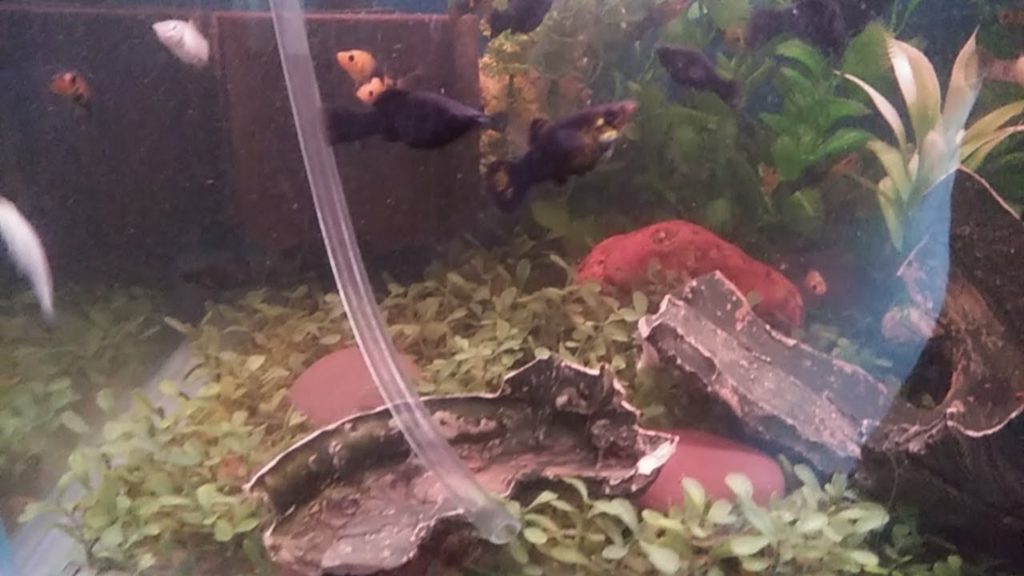
- Slowly increasing the temperature to 80 degrees Fahrenheit;
- The recommended dose of Seachem ParaGuard should be added to the tank (see label);
- As an alternative, add aquarium salt (1 teaspoon per gallon).
Keeping the temperature and the treatment up for at least 4-7 days, then performing a major water change (70%), making certain the substrate is thoroughly cleaned as well.
Even if you keep infected fish in a separate tank where you treat them, you should apply medication to the fish on a tank-level.
Velvet
- In its early phases, copper treatment is effective in curing velvet (I use Seachem Cupramin).
- Turning off the aquarium lights for the length of the therapy and until the illness has been eradicated is also beneficial.
- Once illness symptomatology can no longer be recognized, a significant water change (70-90 percent) is also required.
Fin and tail rot
- Infected fish should be removed and quarantined.
- The best option is to begin them on antibiotics for bacterial infections (such as Maracyn, Maracyn 2, or Tetracycline for gram negative bacteria; alternatively, you can also use Seachem ParaGuard for gram positive bacteria. );
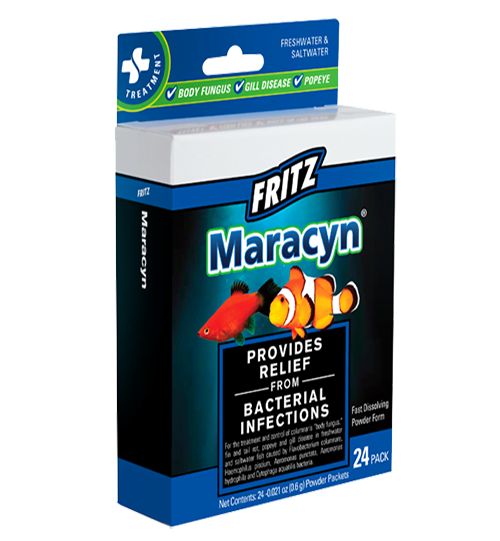
- For fungal infections, use fungal medicine.
- Change the water in the origin tank by 20-50 percent.
Protozoan
- Maintaining stable water temperature (get an aquarium heater with a thermostat; this is a good way to prevent disease);
- In the early stages, malachite green or formalin is used; in the later stages, copper medicine is used;
- 50-70% of the water is replaced after the treatment is completed.
Mouth fungus & columnaris
- The use of Maracyn or Formalin in the treatment of infection;
- A teaspoon per gallon of aquarium salt is added to the aquarium daily within 3 days;
- 50-70% of the aquarium’s water should be changed after the symptoms subside;
- You can also immerse all your fish in a solution of potassium permanganate at a concentration of 10 mg/l for 30 minutes, but don’t exceed the dosage or the treatment time because you may end up burning them.
Dropsy
Currently, there is no treatment for fish suffering from dropsy, especially since they cannot be saved once they start displaying symptoms.
Experts and hobbyists recommend Epsom salt baths as a way to slow down the aging process and make fish more comfortable in their environment.
Swollen gills
- During the next few days, perform a 50% water change and measure the levels of toxins;
- To prevent further water pollution, do not feed your mollies until swelling subsides;
- The aquarium should be filled with some nitrifying bacteria (you can use the API Quick Start tool to do this).
Red blood spot
In spite of the fact that the disease is incurable and will eventually lead to the death of your fish, you should do as much as possible to prevent it through proper nitrogen cycle management.
The good news is that you may still be able to save your fish if you immediately start to eliminate toxins from the aquarium by taking immediate action (skipping feeding for the day, performing a water change) in its early stages.
Ensure that you continue to monitor the levels of ammonia and nitrite in the aquarium, and make regular water changes so that toxins that accumulate due to the wastes that your fish produce will be diluted.
Viral haemorrhagic septicaemia
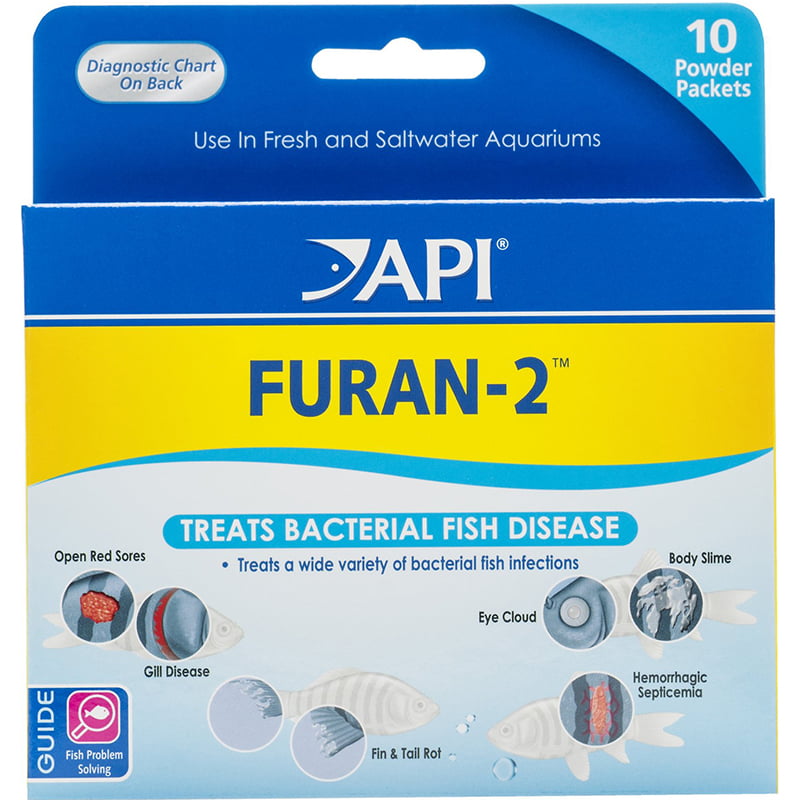
- Take antibiotics as soon as the symptoms appear (Maracyn 2 or API Furan 2 are good choices);
- Immediately after treatment, change the water.
Swim bladder disorder & inflammation
Water maintenance, diet adjustments, and even antibiotics are all part of the treatment. Allow the fish to fast: If an enlarged stomach or intestine is suspected of causing a swim bladder disease, the first step is to stop feeding the fish for 3 days.
Quick & Effective Molly Fish Disease Prevention Tips
The following items will help you keep your molly fish healthy and free of disease:
- Make sure that the temperature of the water and the other parameters are within the proper limits.
- Maintain a clean tank by doing regular water changes and cleaning it regularly.
- Don’t rush the nitrogen cycling process in your aquarium and be sure your tank has completed the nitrogen cycle.
- Don’t overfeed your fish and feed them a varied diet that is well balanced.
- Aquariums should be kept free of dead fish, decaying plants, and leftover food at all times.
- Keep an eye on your fish’s health and the water’s quality.
- Keep new fish in quarantine for 3-4 weeks before adding them to the aquarium.
- If you see sickly-looking fish, move them to the hospital tank for quarantine and treatment.
- You should disinfect new plants before adding them to the aquarium. New plants may carry diseases and parasites, so ensure they are clean before using them.
- You should have basic medications on hand to treat common molly diseases.
- When a fish is not healthy or if it has a genetic condition that shouldn’t be passed on to its offspring, it should not be bred.
- Keep your aquarium stocked with only the right number of fish. Too many fish will lower oxygen levels and can cause waste and toxins to accumulate more quickly.
- Be careful not to stress your fish.
- Before housing different fish together, make sure they can live together.
- Do not allow aggressive fish to nip at other fish’s fins, as injuries can lead to all sorts of infections on your fish.
- Live foods can also carry diseases, so take caution when feeding your fish.
Video: Molly fish Disease ( Dropsy )
FAQs
What are the signs that your Molly fish is sick?
There is a high probability the fish is sick if it appears to have a dark patch on its body or if it acts sluggish. Also, the fish may start swimming in circles or in tight patterns; stop eating, or start swimming slowly in the water.
How come so many diseases are called “livebearer disease”?
Because the illness is capable of infecting all animals. In most animals, there are no evident symptoms or concerns, but it can be lethal in others. However, the majority of infections are not fatal. In other circumstances, an afflicted animal lives a long life with no symptoms before dying abruptly.
Do mollies have a high risk of disease?
The majority of fish infections are worse when the fish is agitated. Swim bladder disease can be caused by chilling, bacteria or digestive issues. The symptoms of fish affected all, particularly balloon mollies’ inability to achieve equilibrium in water treatment examine the water temperature. A medical bath may be beneficial.
Is keeping molly fish alive difficult?
The majority of species are resilient and simple to care for, making them ideal for novices. They are effective in peaceful social tanks. A group of mollies can survive for up to 5 years if kept in a proper habitat.
Related Articles:

Annette M. Chaney is an experienced marine biologist with over 20 years of experience as an aquarist and fishkeeper. She started her first aquarium at a young age, filling it with frogs and goldfish obtained from the ten-cent pet store.
Annette grew up caring for and breeding African Cichlids, which led to a hobby in high school that doubled as a profitable means. Attending Reed College gave her time to solidify herself as an accomplished aquarium caretaker with an eye for sales. After that, from 2009 – 2013, she studied at Roger Williams University – one of the most prestigious universities for Aquaculture and Aquarium in USA. She is the founder of AquariumCircle since 2010.
